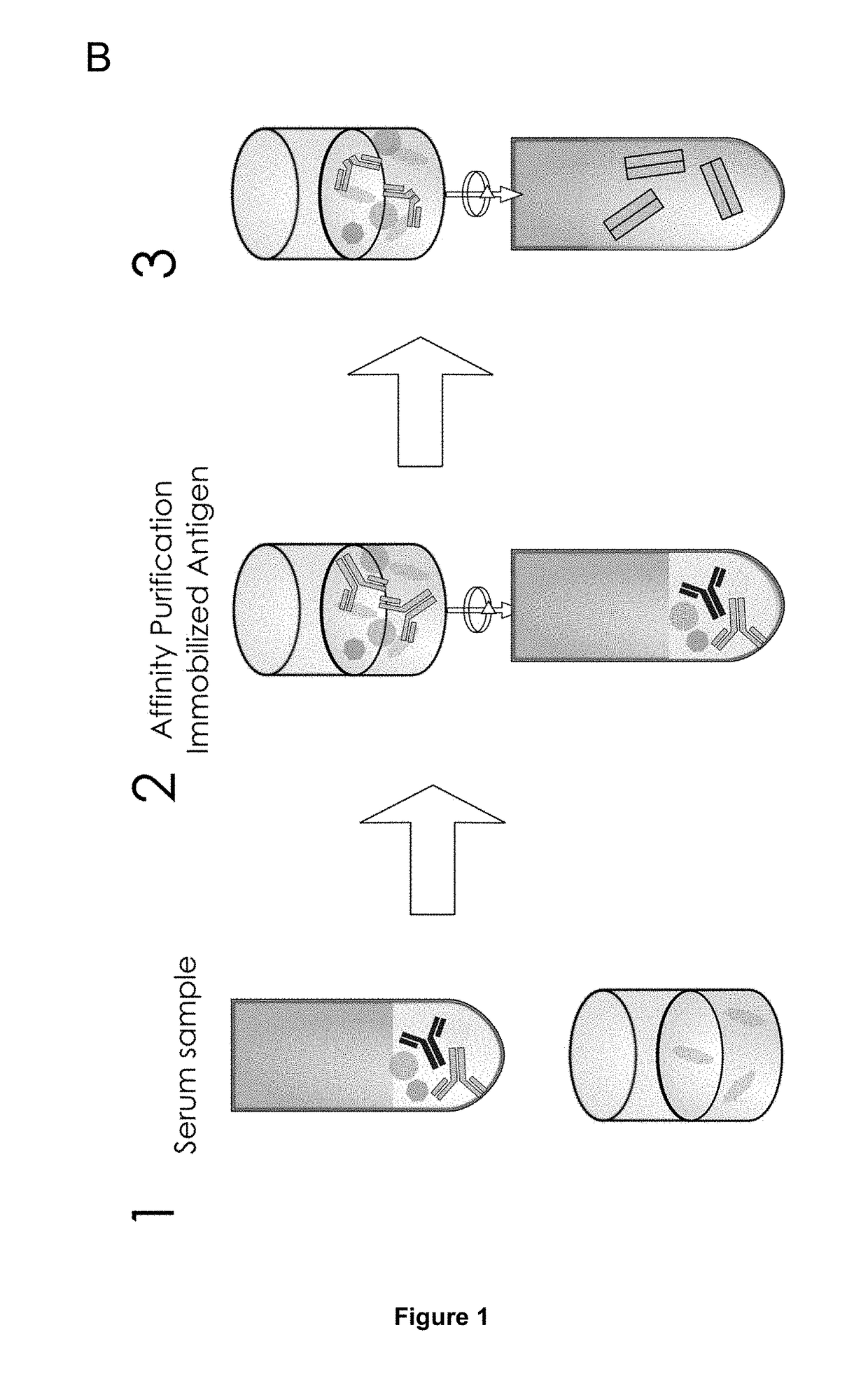Method of Mapping Glycans of Glycoproteins in Serum Samples
a technology of glycans and serum samples, applied in the field of mapping glycans of glycoproteins in serum samples, can solve the problems of insufficient sensitiveness of conventional lc-ms, difficult discrimination, and limited isomer separation methods
- Summary
- Abstract
- Description
- Claims
- Application Information
AI Technical Summary
Benefits of technology
Problems solved by technology
Method used
Image
Examples
example 1
Influence of Glycol-Variants on the Pharmacokinetics of an IgG1 Biopharmaceutical
Preclinical Rabbit Study
[0136]The preclinical study was performed in New Zealand White rabbits. Following single subcutaneous administration of 10 mg kg-1 body weight of an IgG1 mAb1 (anti-TNF-α antibody) blood samples were drawn over a period of time including one pre-dose blood sample. Serum samples were taken at 12 time points after administration. Detailed sampling is listed in Table 1. Concentration of mAb1 in serum was determined by ELISA. From remaining serum 2×50 μl aliquots were used for glycan PK profiling. The first aliquot was analyzed and the second aliquot served as back-up aliquot.
TABLE 1Sampling schedule of the pre-clinical study of an IgG1. At each samplingtime point ~500 μl of serum were drawn.Day1112233458152229Hours post-028244048607296168336504672dose(pre-dose)
Reconstitution of the Antigen
[0137]Recombinant human antigen (TNF-α) produced in E. coli was reconstituted according to the ...
example 2
Influence of Glycol-Variants on the Pharmacokinetics of a Therapeutic Fusion Protein
Preclinical Rabbit Study
[0163]The preclinical study was performed in Himalayan rabbits. Following single subcutaneous administration of 8 mg kg-1 body weight of two different batches of the Fc-fusion protein etanercept (FP1 or FP2), blood samples were drawn over a period of time including one pre-dose blood sample. Sampling was performed as listed in Table 3. At each sampling time point at least 600 μl of serum were drawn. Concentration of FP1 and FP2 in serum was determined by ELISA. From remaining serum 2×50 μl aliquots were used for glycan PK profiling. The first aliquot was analyzed subsequently and the second aliquot served as back-up aliquot.
Preparation of 13C 2-AA Labeled Glycan Standard
[0164]N-glycans of desalted FP1 fusion protein (1 mg) were released using PNGaseF digest overnight (17 h) at 37° C. The N-glycans were separated from the fusion protein by use of Amicon 30K filter devices and w...
PUM
| Property | Measurement | Unit |
|---|---|---|
| Volume | aaaaa | aaaaa |
| Volume | aaaaa | aaaaa |
| Electric charge | aaaaa | aaaaa |
Abstract
Description
Claims
Application Information
 Login to View More
Login to View More - R&D
- Intellectual Property
- Life Sciences
- Materials
- Tech Scout
- Unparalleled Data Quality
- Higher Quality Content
- 60% Fewer Hallucinations
Browse by: Latest US Patents, China's latest patents, Technical Efficacy Thesaurus, Application Domain, Technology Topic, Popular Technical Reports.
© 2025 PatSnap. All rights reserved.Legal|Privacy policy|Modern Slavery Act Transparency Statement|Sitemap|About US| Contact US: help@patsnap.com



